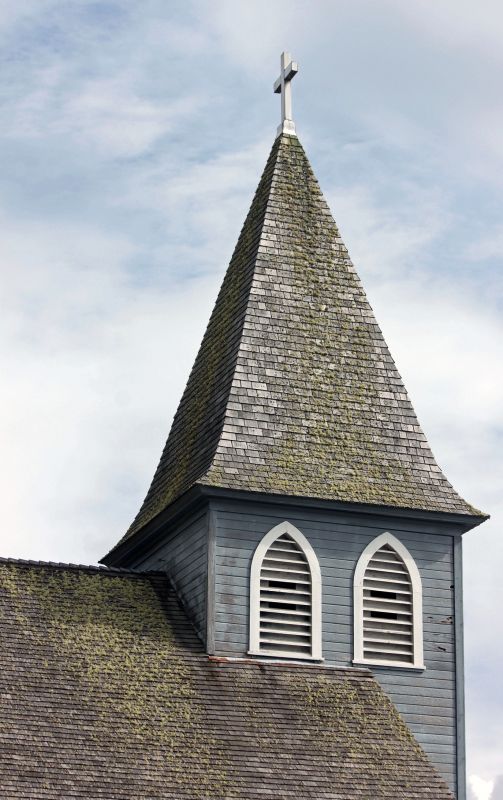Expert Picks For Church Roof Replacement Materials And Accessories
Find out which roofing products industry professionals recommend for durability, ease of installation, and aesthetic appeal.
 Replacing a church roof is a significant project that requires careful planning and selection of suitable materials. The roof not only provides protection from the elements but also contributes to the overall aesthetic and structural integrity of the building. When considering products for a church roof replacement, it is essential to evaluate durability, longevity, and compatibility with the existing structure. Different roofing materials offer various benefits and drawbacks, making it important to assess the specific needs of the building and the preferences of the congregation.
Replacing a church roof is a significant project that requires careful planning and selection of suitable materials. The roof not only provides protection from the elements but also contributes to the overall aesthetic and structural integrity of the building. When considering products for a church roof replacement, it is essential to evaluate durability, longevity, and compatibility with the existing structure. Different roofing materials offer various benefits and drawbacks, making it important to assess the specific needs of the building and the preferences of the congregation.
Top Overall Option
Metal Roofing Panels
Metal roofing panels are a versatile and durable choice for church roof replacements. They are available in various styles and finishes, offering options that can complement both traditional and modern architectural designs. Metal roofs are known for their resistance to weathering, ease of installation, and longevity, often lasting 40 to 70 years with proper maintenance. They can also be installed over existing roofing materials in some cases, reducing installation time and cost. When selecting metal roofing panels, it is important to consider gauge thickness, coating type, and seam style to ensure optimal performance and appearance.
Types of Products For Church Roof Replacements
Asphalt Shingles
A common and cost-effective roofing material that is easy to install and available in numerous styles and colors.
Metal Panels
Durable and long-lasting, available in various profiles such as standing seam, corrugated, or ribbed.
Slate Tiles
Natural stone offering a classic aesthetic, known for its durability and timeless appeal.
Clay Tiles
Traditional roofing material that provides a distinctive look and good weather resistance.
Wood Shingles and Shakes
Provides a rustic appearance but requires regular maintenance and treatment.
Rubber Roofing Membranes
Flexible and waterproof, suitable for flat or low-slope roofs.
Synthetic Roofing Materials
Manufactured to mimic natural materials like slate or wood, often lighter and easier to install.
Built-Up Roofing Systems
Multi-layered roofing suited for flat roofs, offering excellent waterproofing capabilities.
EPDM Rubber Roofing
A popular single-ply membrane known for its durability and ease of installation on flat roofs.
TPO Roofing Membranes
Reflective and energy-efficient, suitable for flat or low-slope roofs.
PVC Roofing Sheets
Versatile and resistant to chemicals, often used in commercial and religious buildings.
Green Roofing Systems
Vegetative roofs that incorporate plantings, offering aesthetic and functional benefits.
Popular Choices
Widely chosen for their durability and variety of styles suitable for different architectural looks.
Popular for their aesthetic appeal and ease of installation, available in many colors.
A sleek, modern metal roofing option that provides excellent weather resistance.
Favored for historic or traditional church buildings due to their timeless appearance.
Chosen for their durability and distinctive aesthetic, especially in warmer climates.
Commonly used on flat roofs for its waterproofing qualities and ease of repair.
Popular for energy efficiency and reflective properties on flat or low-slope roofs.
Selected for rustic or historic-style churches, offering natural beauty.
A lighter, more affordable alternative to natural slate with similar aesthetic qualities.
Trusted for flat roofs requiring robust waterproofing layers.
A practical choice for low-slope or flat roofs needing flexible waterproofing solutions.
Many churches opt for traditional roofing materials such as asphalt shingles or metal panels, which are known for their versatility and ease of installation. Metal roofing, in particular, has gained popularity due to its resistance to weathering and its ability to last for several decades with minimal maintenance. For churches with historic significance, slate or clay tiles may be preferred for their aesthetic appeal and timeless look, although these materials tend to be heavier and may require additional structural support.
In addition to the primary roofing material, underlayment options play a crucial role in protecting the structure from leaks and moisture infiltration. High-quality underlayments, such as synthetic or rubberized membranes, can provide extra waterproofing and extend the lifespan of the roof. Ventilation products are also important, helping to regulate temperature and prevent moisture buildup inside the roofing assembly. Proper flashing and sealants are necessary to ensure the roof remains watertight, especially around chimneys, vents, and other penetrations.
Selecting the right products involves balancing cost, durability, aesthetic preferences, and ease of installation. Consulting with roofing specialists and considering the specific architectural style of the church can help identify the most suitable materials and accessories. Ultimately, the goal is to choose products that will protect the building effectively while maintaining its visual and structural integrity for years to come.
Key Buying Considerations
- Compatibility with existing roof structure and architecture style
- Durability and expected lifespan of the roofing material
- Weather resistance and performance in your climate
- Weight of the roofing material and structural support requirements
- Ease of installation and availability of professional installers
- Maintenance requirements over the lifespan of the roof
- Cost of materials and installation labor
- Warranty options and manufacturer reputation
- Aesthetic appeal and how it complements the building's design
- Energy efficiency and thermal performance
- Compatibility with existing roofing accessories like flashing and vents
- Environmental factors such as susceptibility to corrosion or moss growth
- Local building codes and regulations compliance
- Potential for future repairs or replacements
This content contains affiliate links. We may earn a commission if you purchase through these links, at no additional cost to you.
